Bitcoin (BTC) tried to break out of its range last week, but the bulls could not sustain the higher levels. Bitcoin is back inside the range and is trading near the $26,000 level. The price action of the past few days has formed two successive Doji candlestick patterns on the weekly chart, indicating uncertainty about the next directional move.
Although it is difficult to predict the direction of the breakout, the downside may be limited in the near term on expectations that the United States Securities and Exchange Commission (SEC) may eventually approve one or more pending applications for a spot Bitcoin exchange-traded fund. Former commission chair Jay Clayton sounded confident when he said in a recent interview that “an approval is inevitable.”
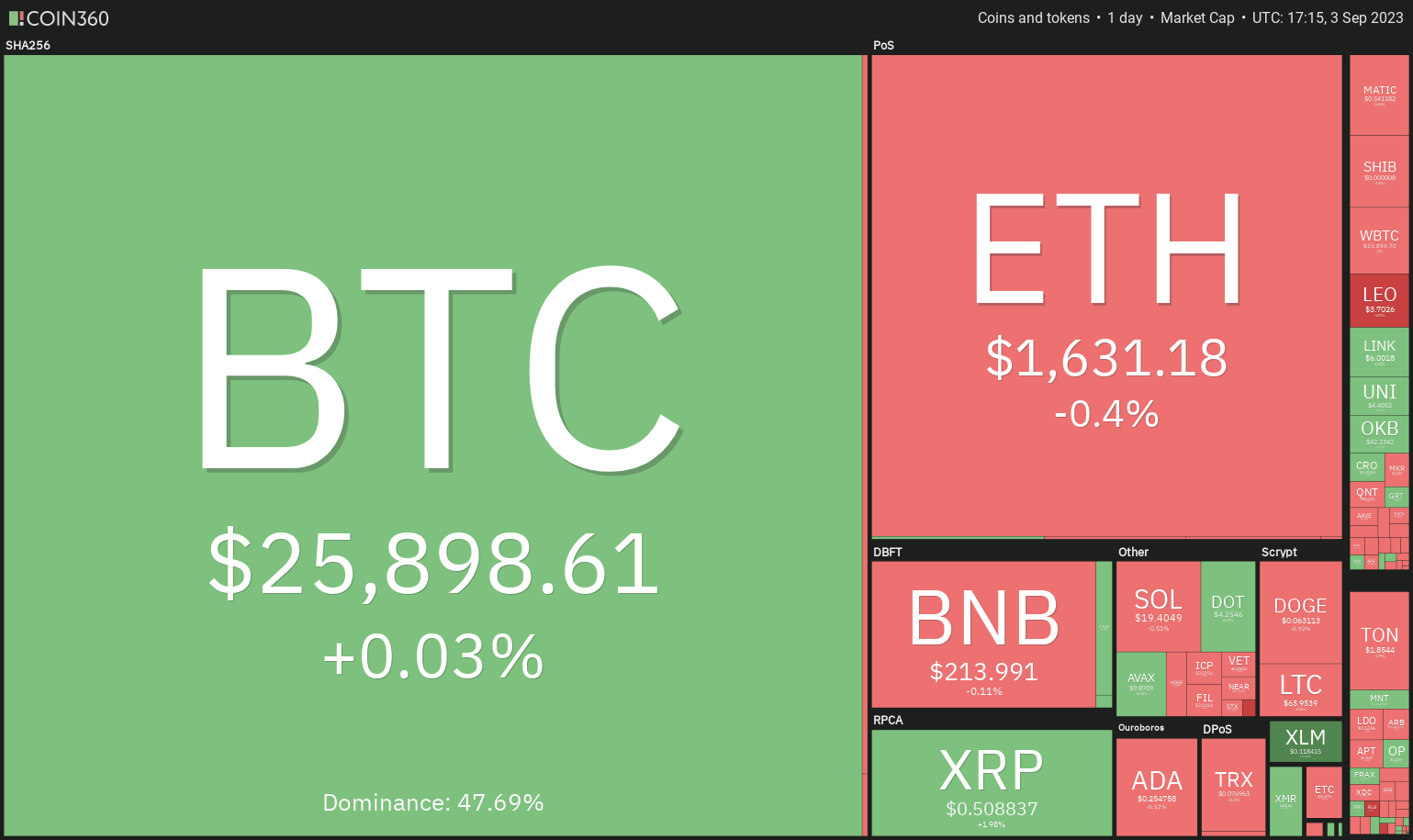
Only a handful of altcoins are showing signs of strength in the short term. Let’s study the charts of top-5 cryptocurrencies that may start a rally if they break above their respective overhead resistance levels.
Bitcoin price analysis
Bitcoin is back inside the $24,800 to $26,833 range, but a positive sign is that the bulls continue to buy the dips as seen from the long tail on the Sep. 1 candlestick.
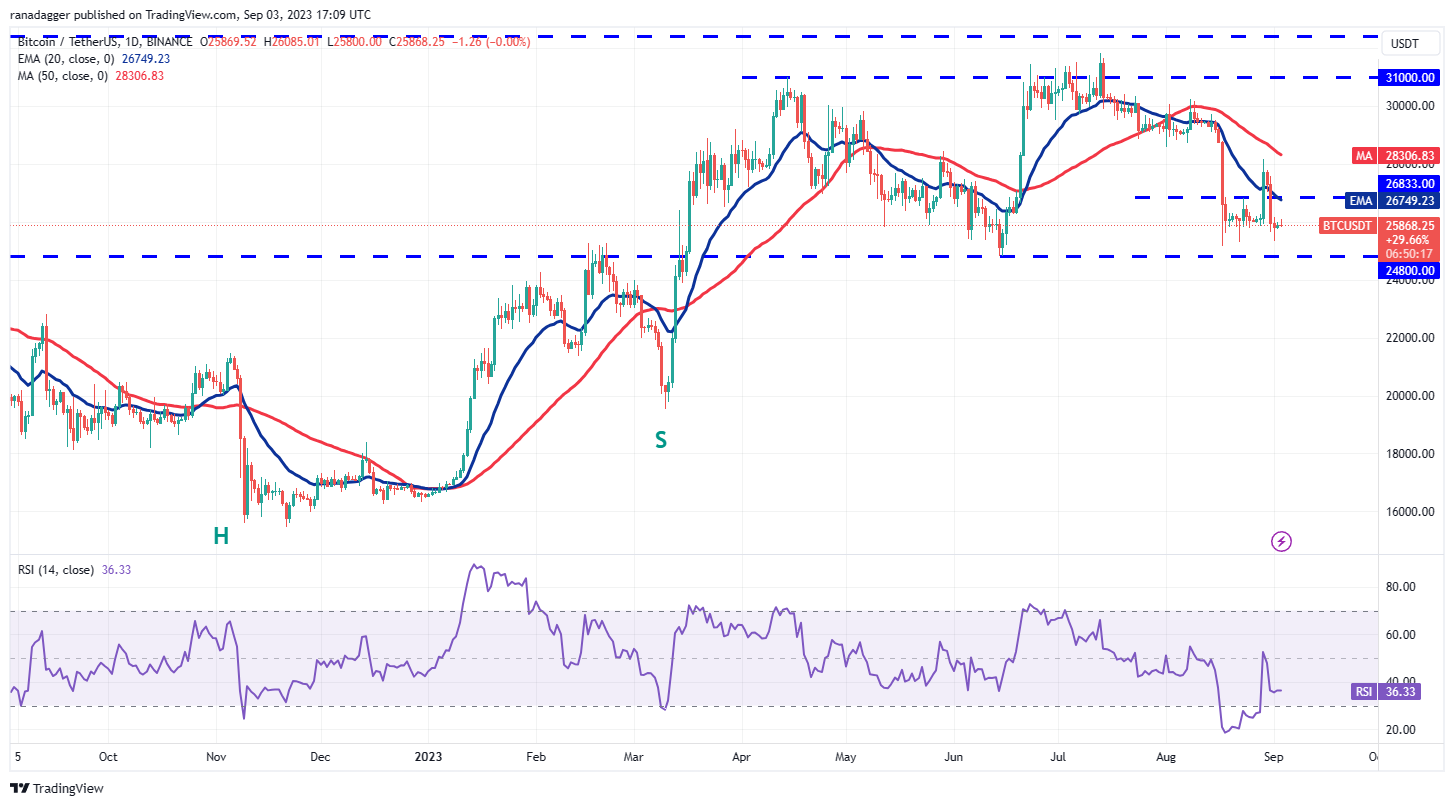
If bears want to seize control, they will have to sink and sustain the price below $24,800. This is going to be a tough task as the bulls are likely to defend the level with all their might. Still, if the bears prevail, the pair could plunge to $20,000. There is a minor support at $24,000 but it may not halt the decline.
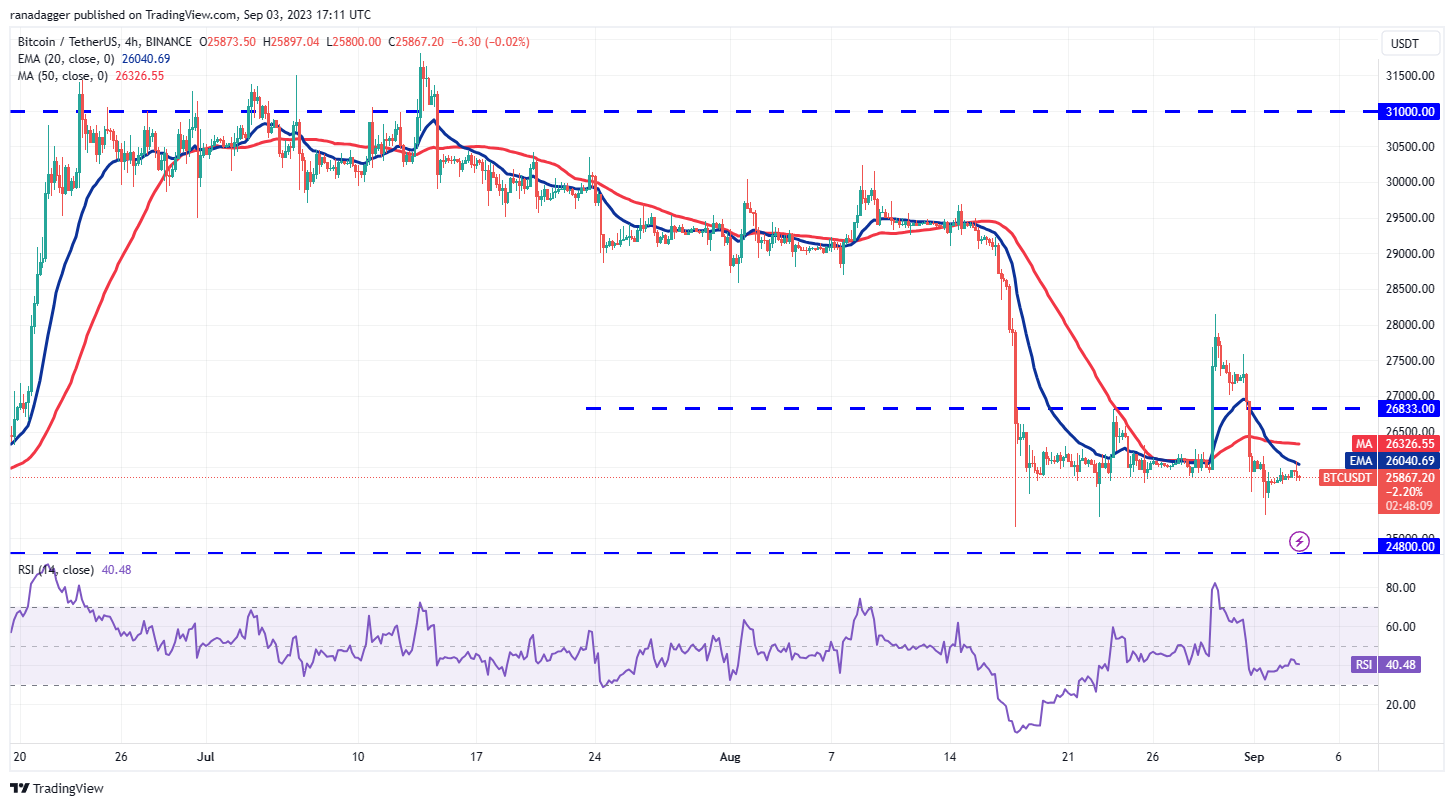
The 50-day simple moving average may act as a roadblock but it is likely to be crossed. That could clear the path for a possible rally to the overhead resistance at $26,833.
Sellers are likely to have other plans. They will try to sink the price below $25,300 and challenge the vital support at $24,800.
Toncoin price analysis
Toncoin (TON) is in an uptrend but the bears are trying to halt the up-move near the overhead resistance at $2.07.
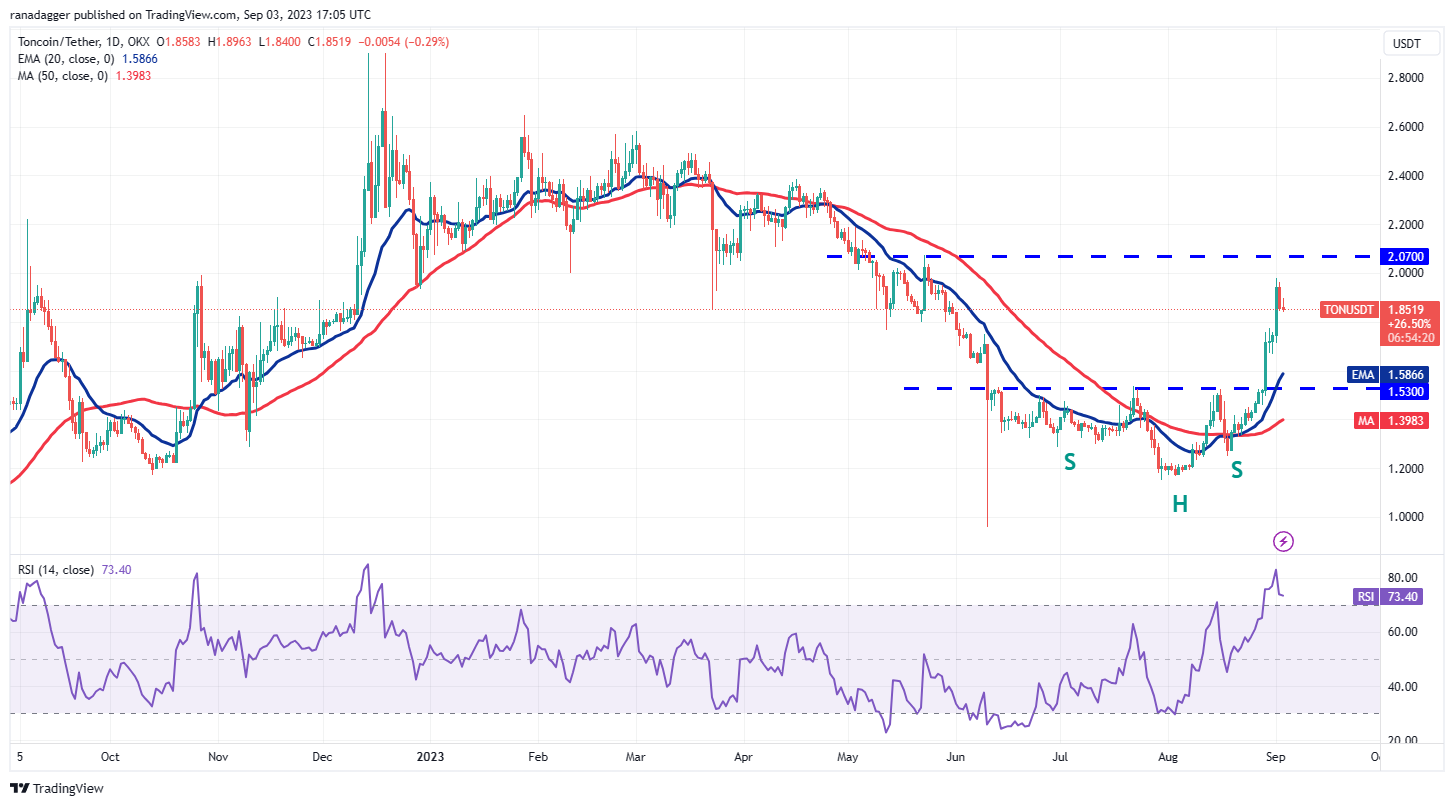
Contrarily, a deeper correction could pull the price to the 20-day EMA ($1.58). A strong bounce off this level will suggest that the sentiment has turned positive and traders are buying on dips. The trend will turn negative if the 20-day EMA support cracks.
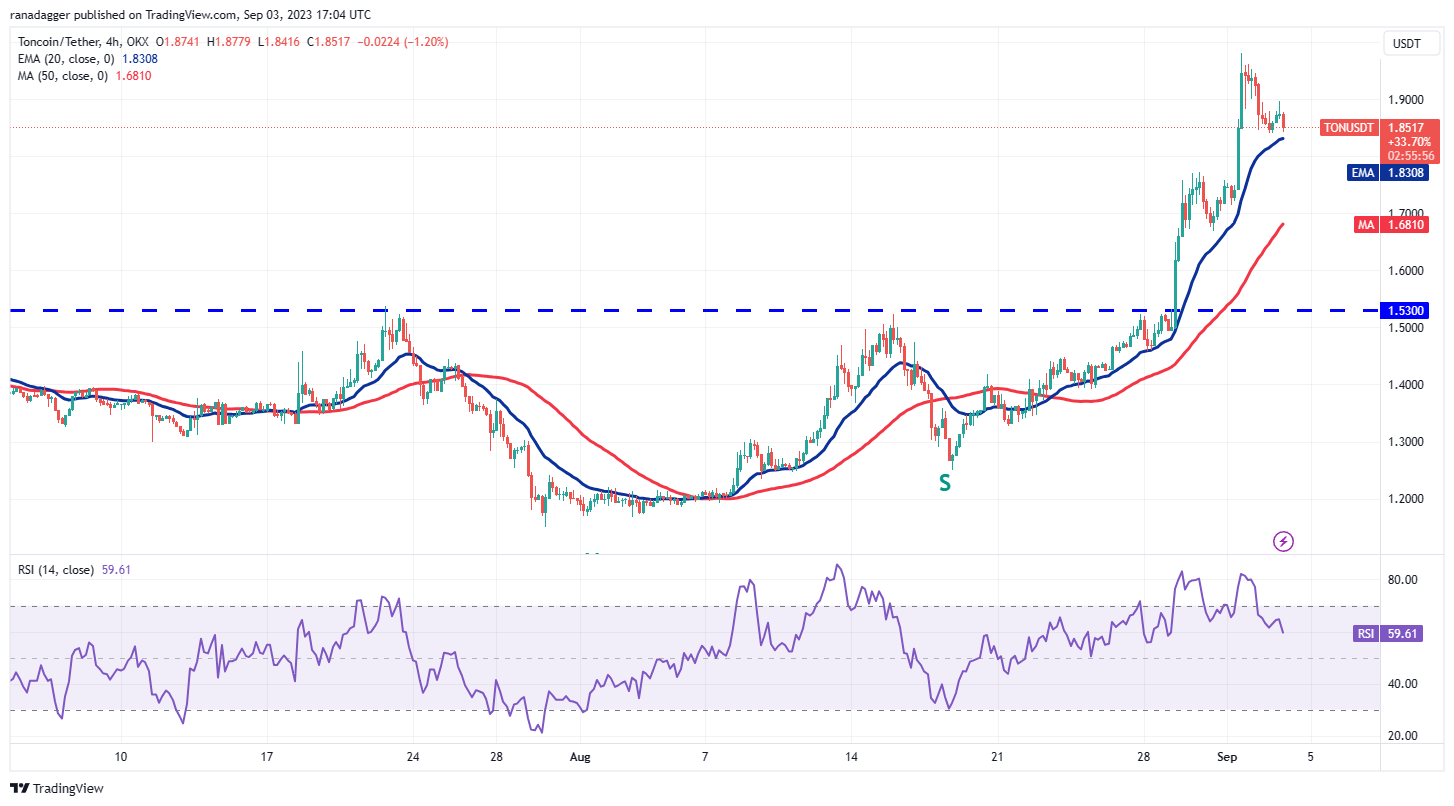
On the contrary, if the 20-EMA support breaks down, it will indicate that traders are rushing to the exit. That could start a deeper pullback toward the 50-SMA. A bounce off this level could face selling at the 20-EMA but if this roadblock is cleared, it will suggest that bulls are back in the driver’s seat.
Chainlink price analysis
Chainlink (LINK) has been trading inside a large range between $5.50 and $9.50 for the past several months. The bears pulled the price below the support of the range on June 10 but they could not sustain the lower levels.
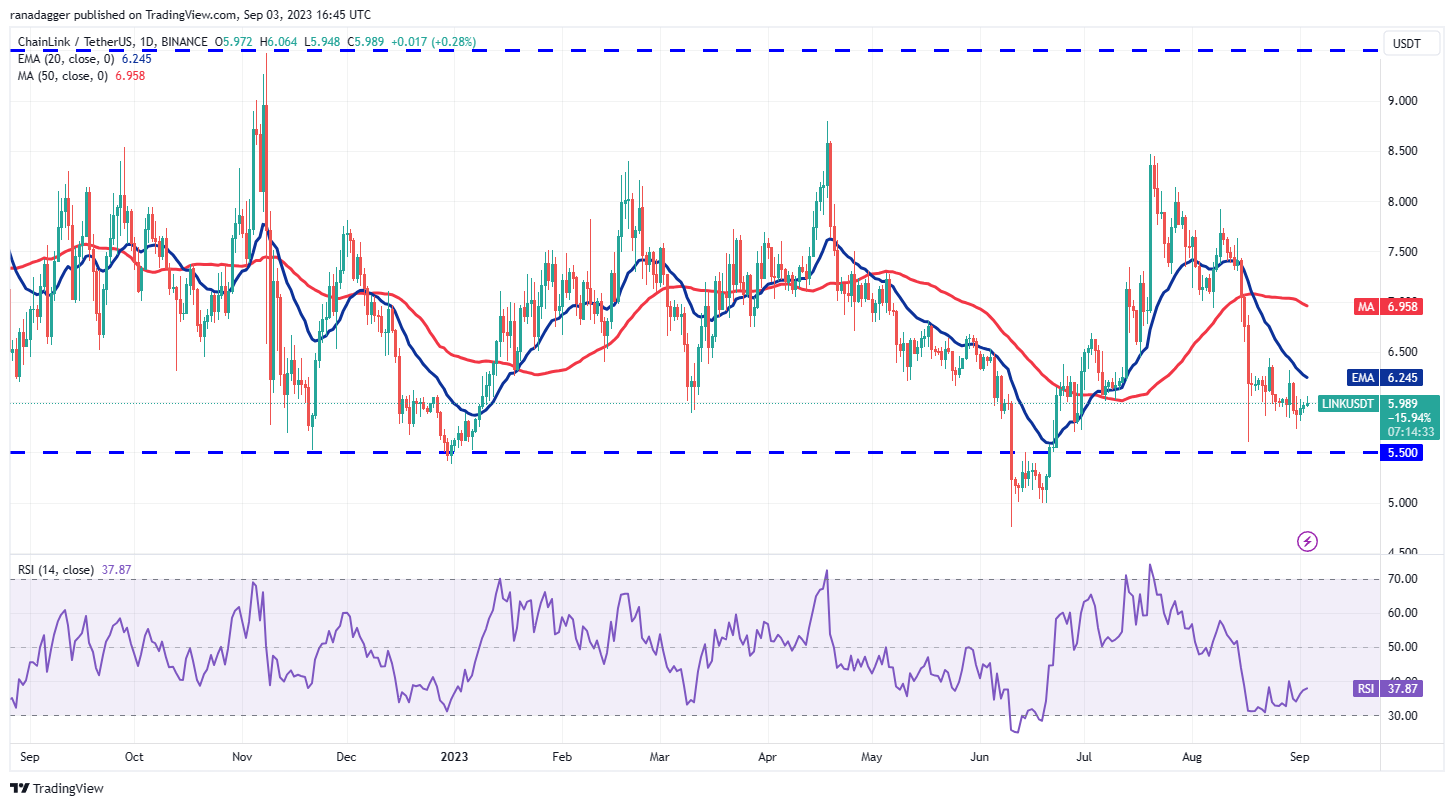
If buyers propel the price above the 20-day EMA, the pair could start its journey toward the 50-day SMA ($6.95). There is a minor resistance at $6.40 but it is likely to be crossed.
On the contrary, if the price turns down sharply from the 20-day EMA, it will suggest that the sentiment remains negative and traders are selling on rallies. That could pull the price down to $5.50.
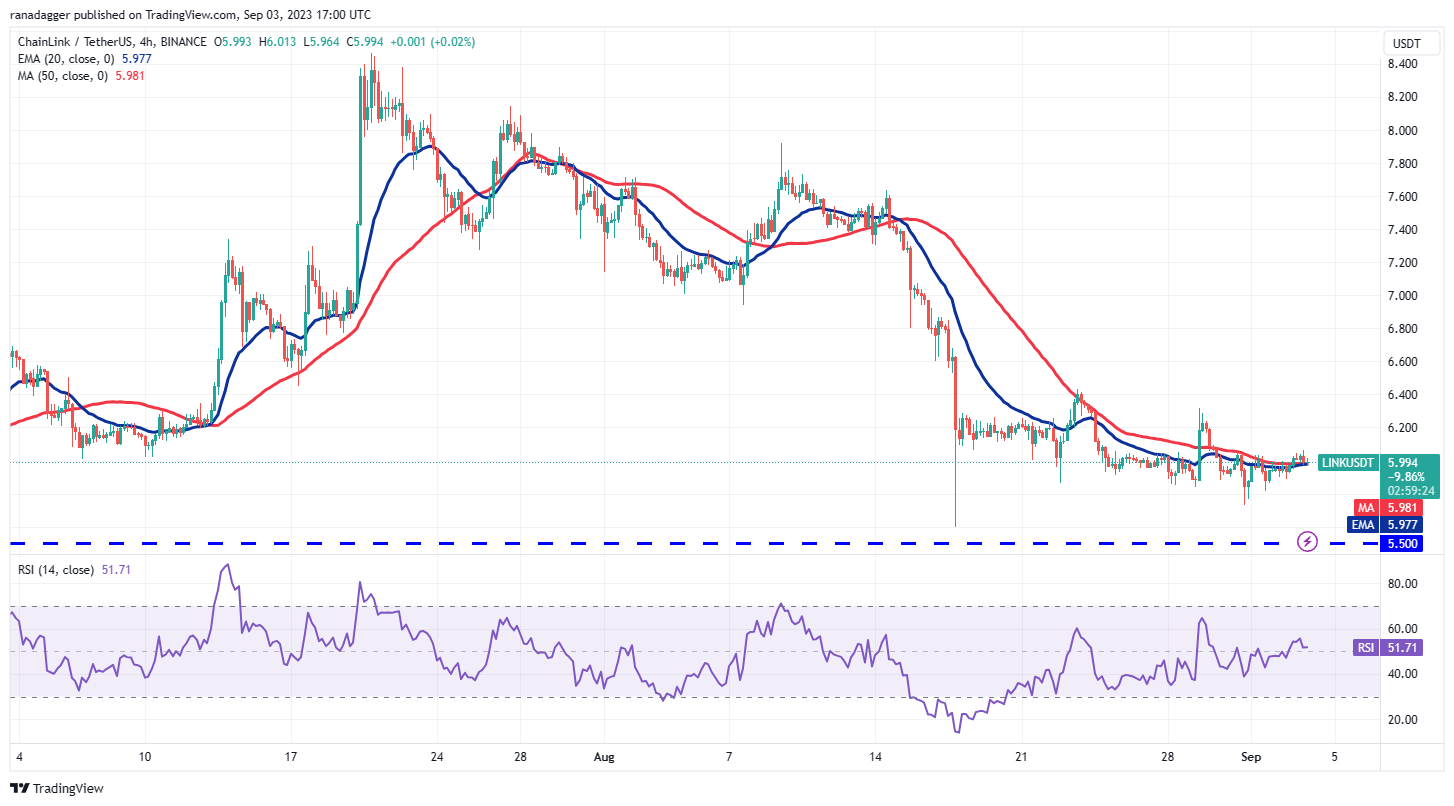
Alternatively, if the price turns down from $6.40, it will signal that bears are selling on rallies. That may keep the pair range-bound between $5.50 and $6.40 for a while longer.
Related: Bitcoin chart highlights $24.7K as analyst says ‘nothing has changed’
Maker price analysis
Maker (MKR) has taken support near $1,000 and is attempting to resume its uptrend. The bulls are facing resistance at the downtrend line but a positive sign is that they have kept the price above the 20-day EMA ($1,107).
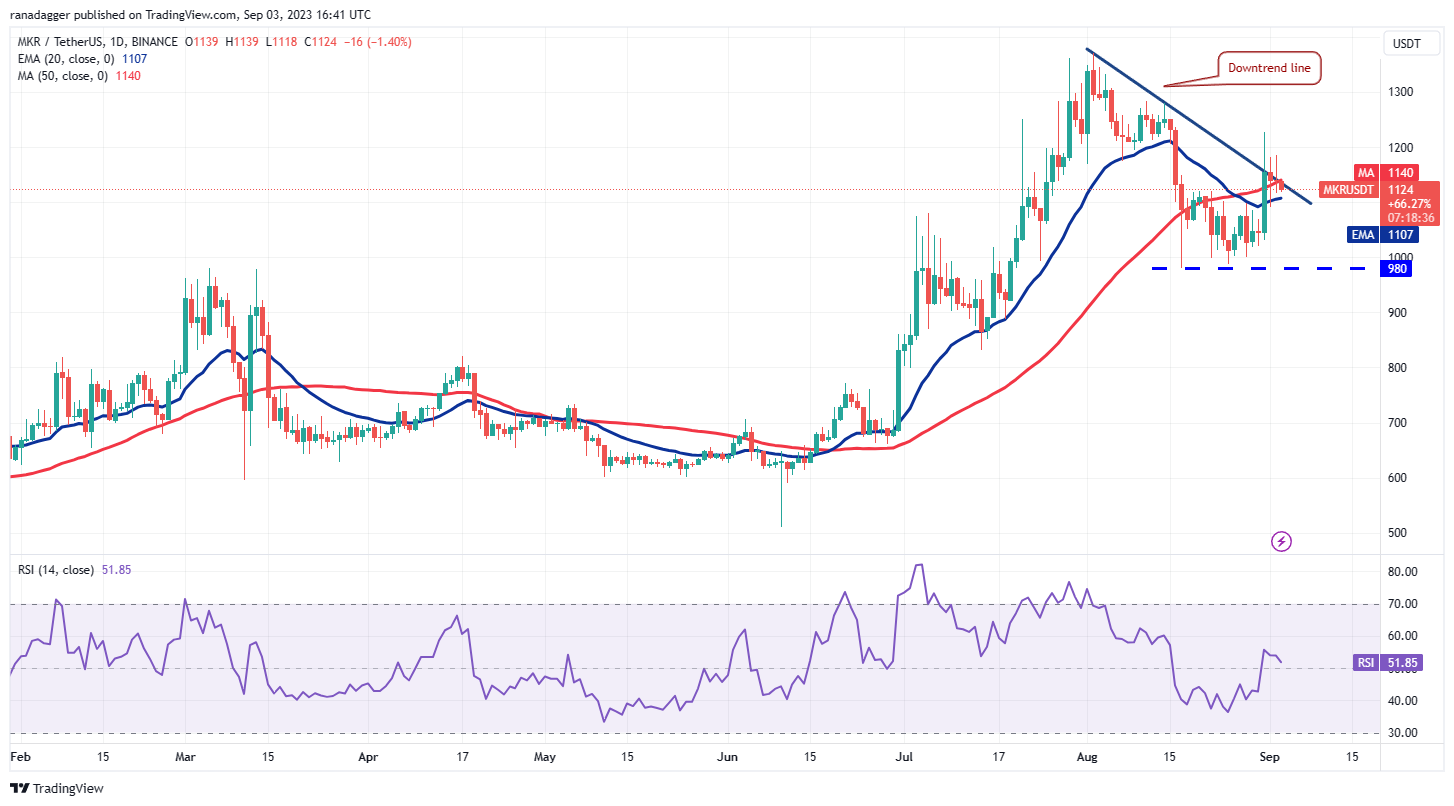
Instead, if the price continues lower and breaks below the 20-day EMA, it will signal that the bears are fiercely defending the downtrend line. The MKR/USDT pair may then slump to the strong support at $980 and eventually to $860.
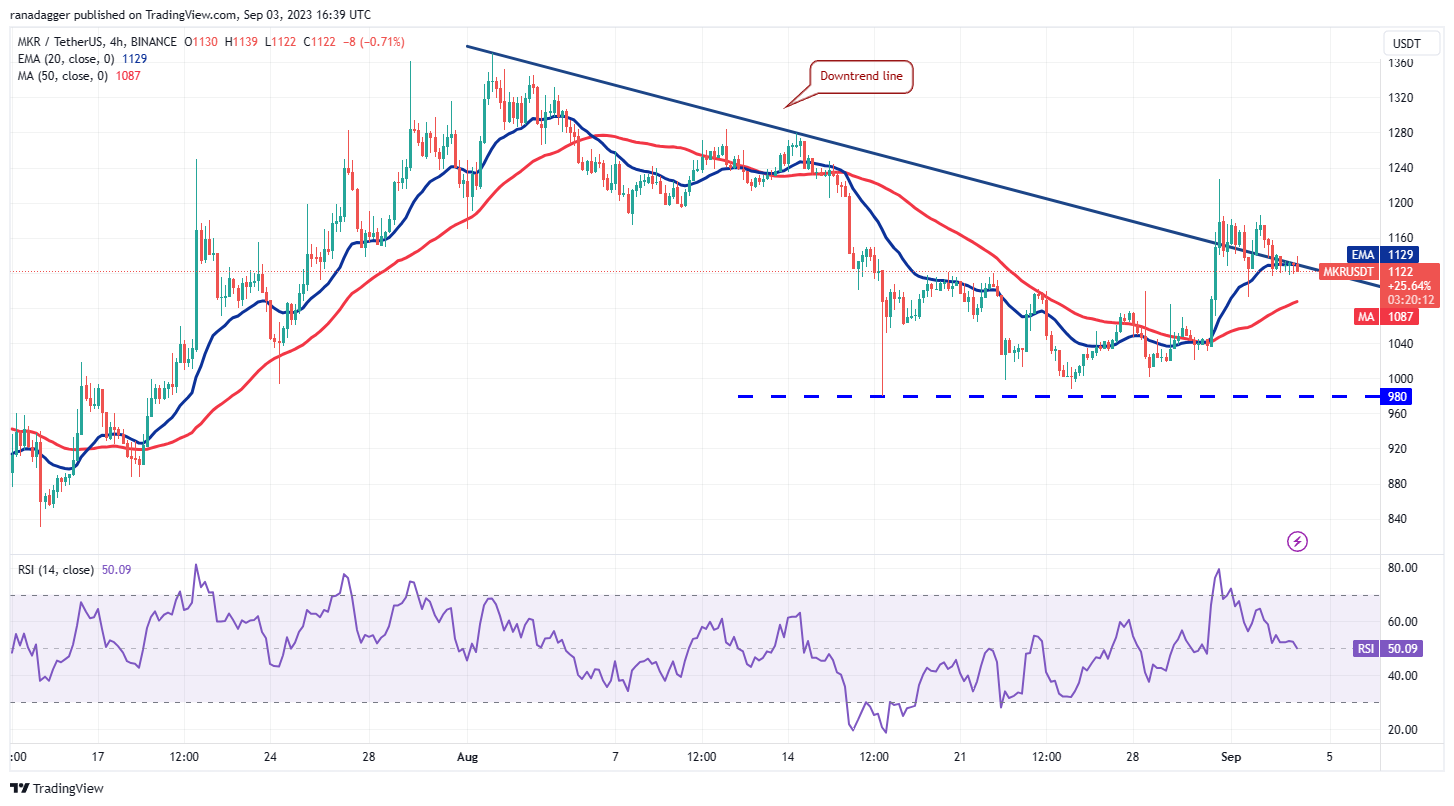
The 20-EMA is witnessing a tough battle between the bulls and the bears. If the price rebounds off this level, the bulls will make one more attempt to overcome the obstacle at $1,186 and then at $1,227. If this zone is scaled, the rally could reach $1,280.
Conversely, if the price sustains below the 20-EMA, it could open the gates for a possible decline to the 50-SMA and then to $1,040.
Tezos price analysis
Tezos (XTZ) has been witnessing a tussle between the bulls and the bears near the strong support at $0.70. The failure of the bears to sink and sustain the price below this level indicates buying at lower levels.
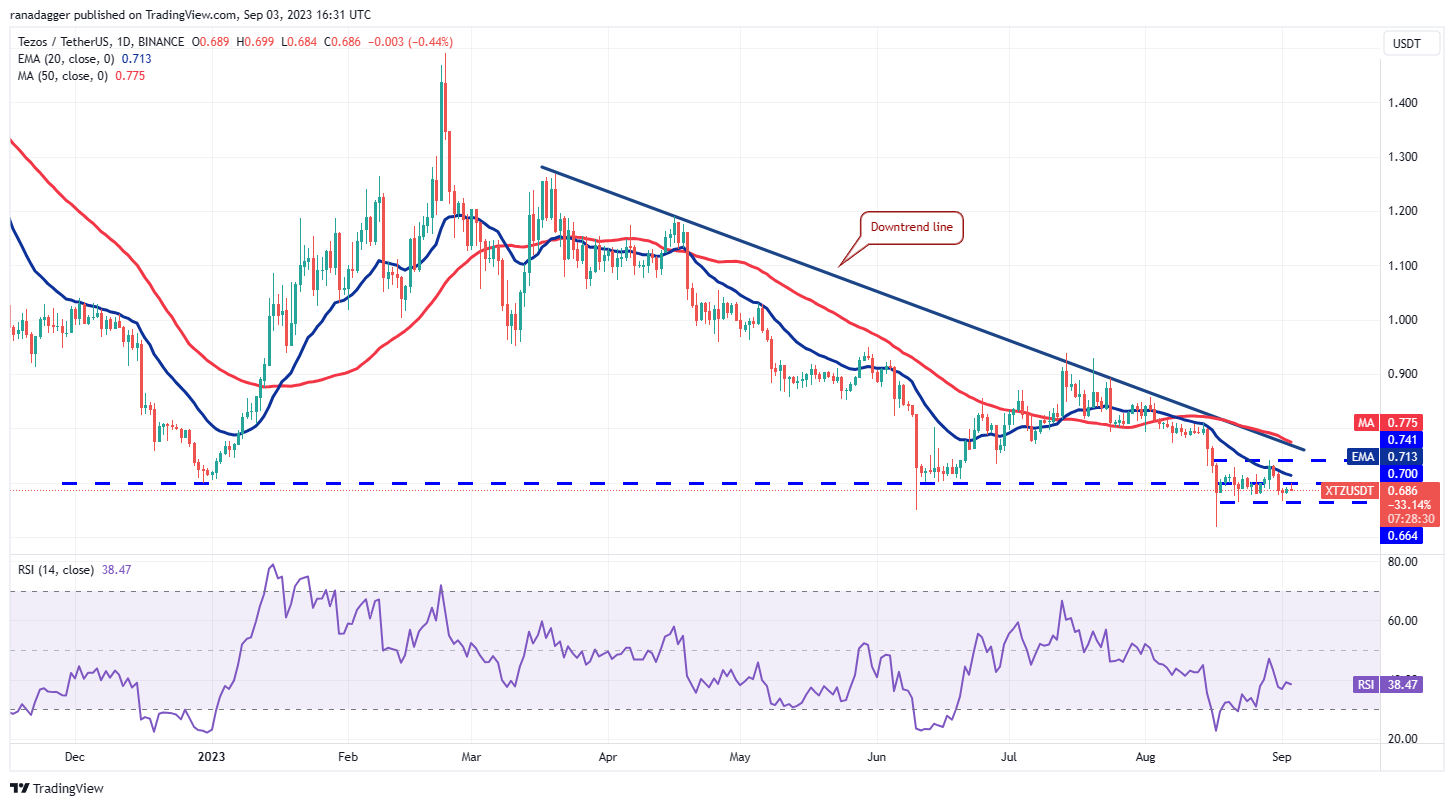
This level may act as a formidable hurdle but if the bulls overcome it, the XTZ/USDT pair may start a new up-move. The pair could first rally to $0.94 and subsequently to $1.04. This positive view will invalidate if the price skids and sustains below $0.66.
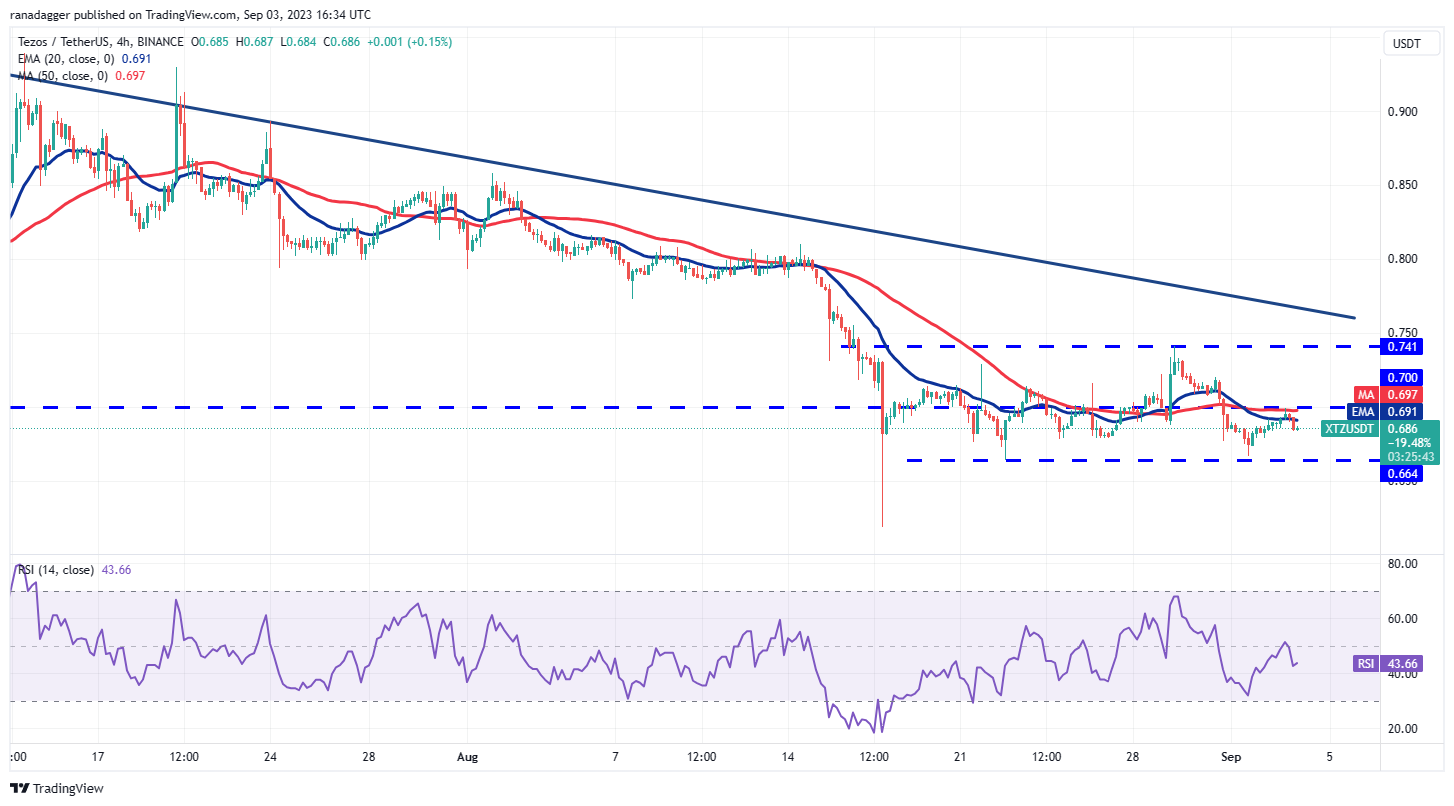
On the other hand, if the price turns up and rises above $0.69, it will indicate sold buying at lower levels. The pair could then surge to the overhead resistance at $0.74. Buyers will have to thrust the price above the downtrend line to signal the start of a new up-move.
This article does not contain investment advice or recommendations. Every investment and trading move involves risk, and readers should conduct their own research when making a decision.



Leave A Comment